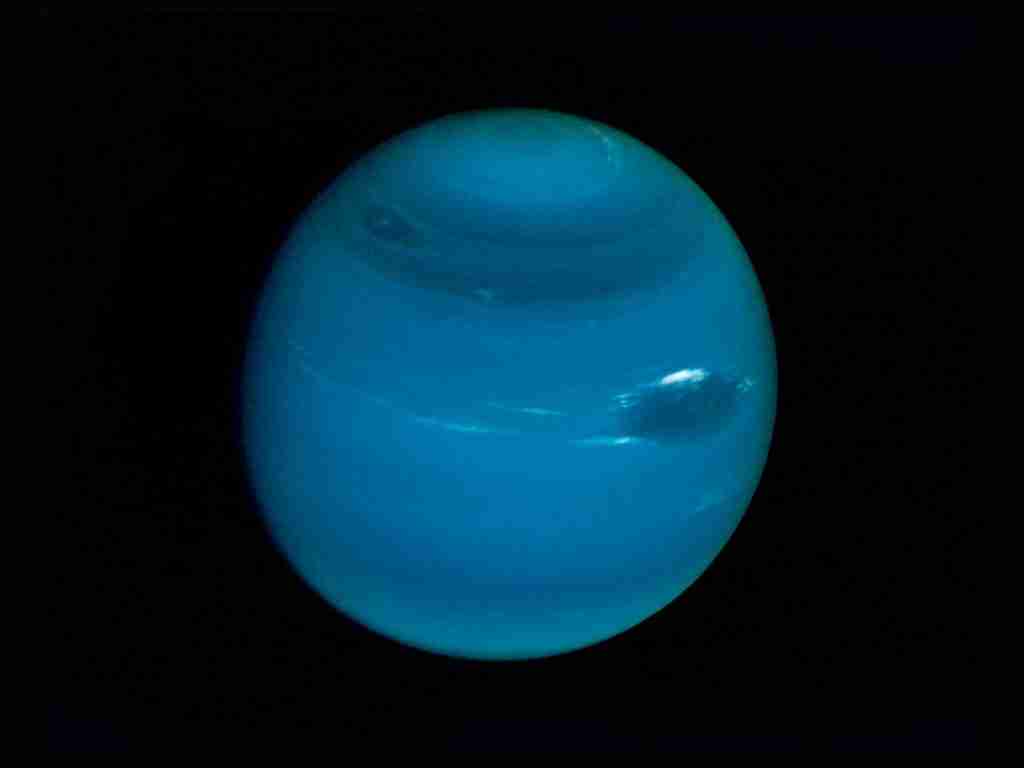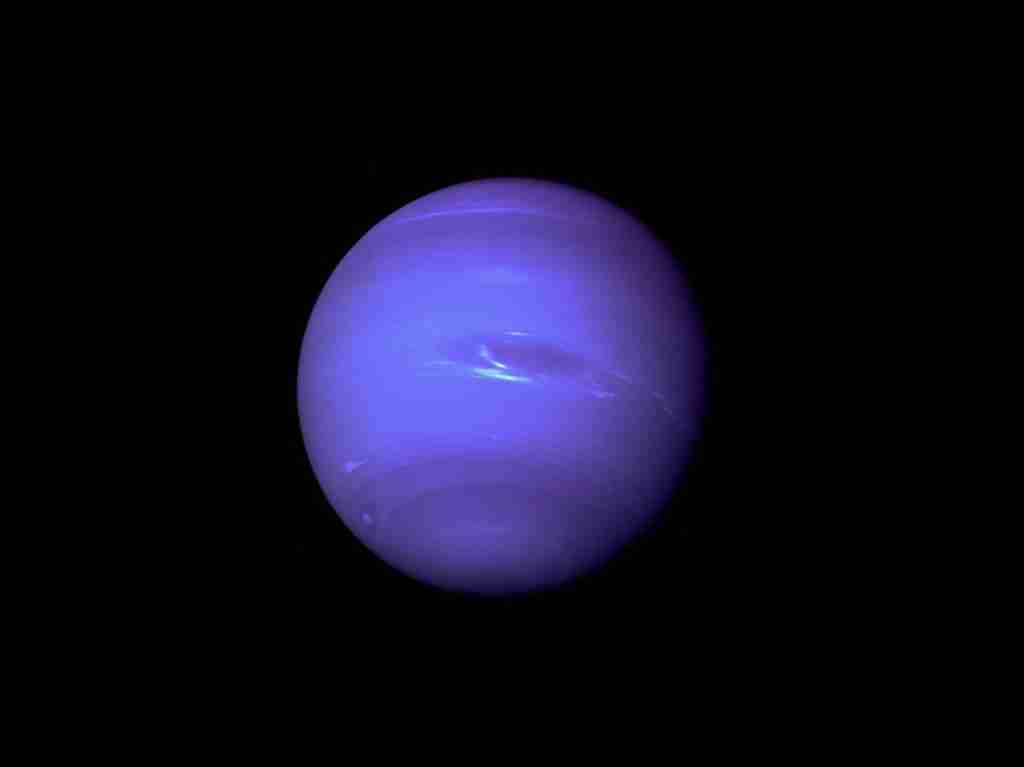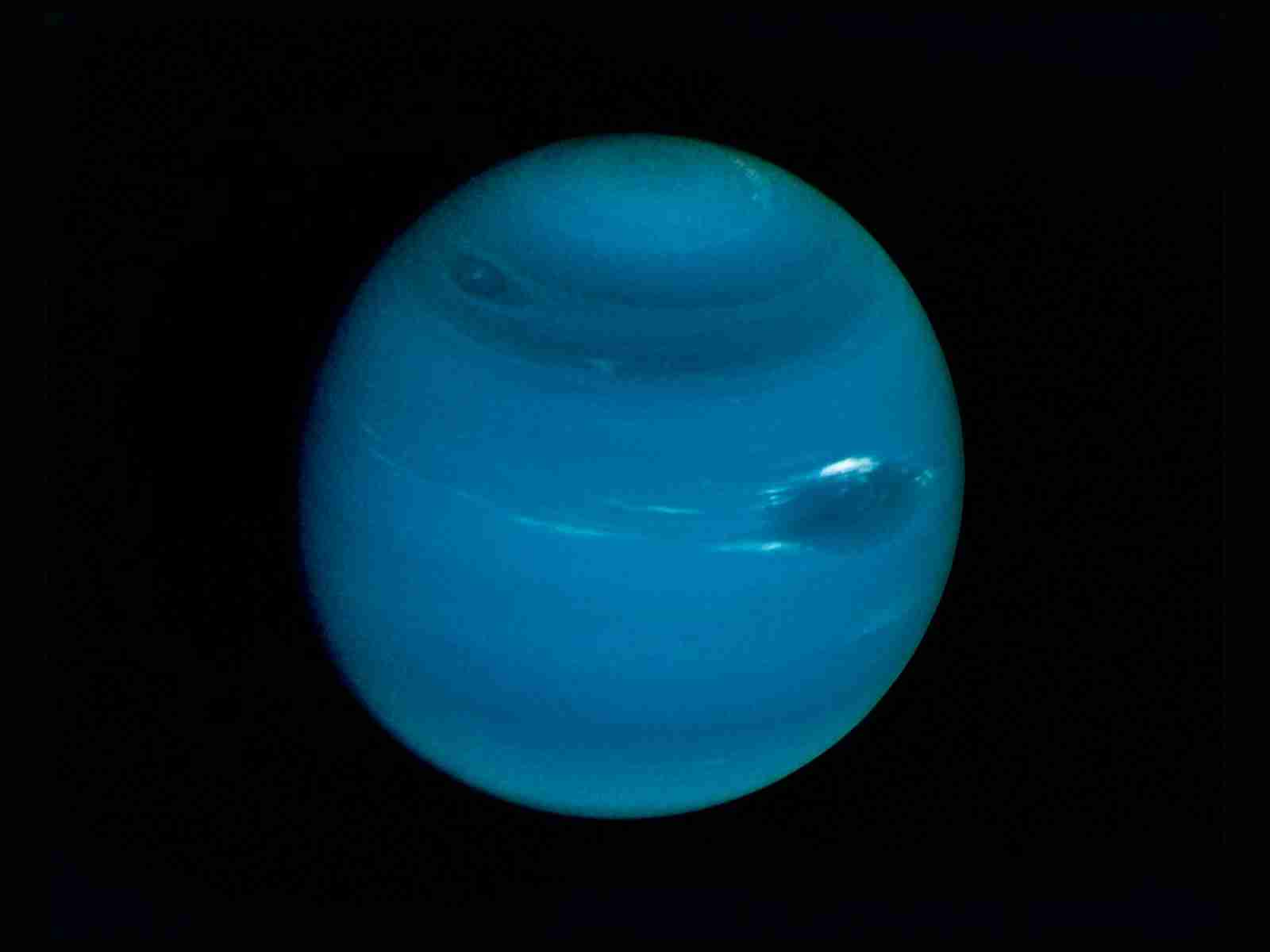22 Fun Facts About Neptune | Beyond Your Imagination
1. Neptune is the farthest planet from the Sun in our solar system.
It takes Neptune an incredible 165 Earth years to complete a single orbit around the Sun. This vast distance makes it a cold and remote world.
Neptune’s great distance means it receives significantly less sunlight and heat compared to inner planets like Earth. This contributes to its frigid temperatures.
2. Neptune has the strongest winds of any planet in the solar system.
Neptune’s atmosphere is whipped into ferocious storms, with winds reaching speeds of up to 1,300 miles per hour. These powerful winds are even faster than the speed of sound on Earth!
Scientists are still working to understand the source of Neptune’s intense winds. One theory is that its internal heat contributes to the generation of such powerful atmospheric forces.
3. Neptune was discovered through mathematical prediction, not direct observation.
Astronomers noticed irregularities in the orbit of Uranus and hypothesized they were caused by another planet’s gravity. Calculations led them to predict Neptune’s location, and it was later observed in 1846.
This demonstrates the power of mathematics and scientific deduction. It showcases how celestial bodies can impact each other even across vast distances.
4. Neptune has 14 known moons.
Neptune’s largest moon, Triton, is a fascinating world with icy volcanoes and a potential subsurface ocean. Smaller moons orbit Neptune in varied and unusual paths.
This lunar system offers a wealth of potential discoveries. Studying Neptune’s moons can provide insights into the formation of our solar system.
5. Neptune has rings, though they are much fainter than Saturn’s.
Neptune possesses five distinct rings made primarily of ice particles and dust. These rings are less visible due to their composition and Neptune’s distance from the Sun.
The presence of rings further highlights the diversity of planetary features in our solar system. It reminds us that there’s always more to discover.
6. A day on Neptune is shorter than a day on Earth.
Neptune rotates very quickly on its axis, with a day lasting about 16 hours. This rapid spin contributes to the planet’s extreme weather patterns.
This fact offers a perspective on how the length of a ‘day’ can vary greatly across planets. It highlights the diverse range of conditions within our solar system.
7. Neptune is blue due to the presence of methane in its atmosphere.
Methane gas absorbs red light and reflects blue light, giving Neptune its distinctive color. This is similar to how Earth’s sky appears blue due to the scattering of light.
This fact connects the appearance of Neptune to the specific composition of its atmosphere. It showcases how gases and light interact to create the colors we see in the universe.
8. Only one spacecraft, Voyager 2, has ever flown past Neptune.

The Voyager 2 flyby in 1989 provided much of our current knowledge about Neptune and its moons. This mission sent back invaluable images and data.
This emphasizes how much is still left to explore about Neptune and its system. It underscores the importance of space missions in expanding our understanding of the outer solar system and beyond.
9. Neptune has a large, dark storm similar to Jupiter’s Great Red Spot.
This storm system was observed by Voyager-2, but later disappeared when the Hubble Space Telescope looked for it. This highlights the dynamic and changing nature of Neptune’s atmosphere.
These types of storms offer opportunities to study weather patterns and atmospheric processes on distant planets. It reinforces that even seemingly remote worlds are in constant states of flux.
10. Neptune is an ice giant planet.
Unlike gas giants Jupiter and Saturn, Neptune has a large icy mantle beneath its thick atmosphere. This composition gives it a unique place in planetary classification.
Studying ice giants like Neptune helps scientists understand the diverse planet types that formed in our solar system. It provides clues about the evolution of these distant, complex worlds.
11. Some scientists believe it might rain diamonds on Neptune.
The extreme pressures and temperatures within Neptune’s atmosphere could transform carbon into diamonds. While unconfirmed, this theory adds an intriguing possibility to the wonders of this planet.
This is an example of fun facts about Neptune that spark the imagination. It highlights the exotic and potentially surprising phenomena that might exist on other planets.
12. Neptune’s temperatures are incredibly cold due to its distance from the Sun.

The average surface temperature on Neptune hovers around -353 degrees Fahrenheit (-214 degrees Celsius). This extreme cold shapes the planet’s composition and weather patterns.
Neptune’s frigid environment is a stark contrast to the inner planets. It highlights the vast range of temperatures and conditions found in our solar system.
13. Neptune has a powerful magnetic field.
Neptune’s magnetic field is tilted significantly off its axis and is much stronger than Earth’s. This unusual magnetic field contributes to the planet’s complex auroras.
Studying Neptune’s magnetic field can provide insights into the planet’s interior structure. It also offers a point of comparison when understanding magnetic fields across different planets.
14. Neptune’s moon Triton orbits the planet in a retrograde direction.
Triton moves in the opposite direction of Neptune’s rotation, a rare phenomenon among moons. Scientists believe Triton may be a captured dwarf planet rather than a moon formed around Neptune.
Triton’s unusual orbit adds to the planet’s intrigue. It suggests a dynamic history for the Neptunian system.
15. Neptune’s atmosphere contains a higher concentration of methane than other giant planets.
The abundance of methane is what gives Neptune its vibrant blue hue. This difference in composition sets Neptune apart from its fellow gas giants.
Understanding variations in atmospheric makeup across planets helps scientists piece together the formation and evolution of these celestial bodies. It’s a clue in the puzzle of our solar system.
16. Seasons on Neptune last for decades.

Due to Neptune’s long orbit, a single season on the planet lasts about 40 Earth years. This means changes in weather and temperature occur much more gradually on Neptune compared to Earth.
This fact provides perspective on how the length of a year impacts planetary environments. It reminds us that our experience of seasons on Earth is just one possibility among many.
17. Neptune is too dim to be seen by the naked eye from Earth.
Despite its size, Neptune’s great distance makes it invisible without a telescope. This contrasts with some other planets that can be observed under the right conditions.
This reminds us of the limitations of human sight when it comes to the cosmos. It explains why some discoveries depended upon the advancement of tools like telescopes.
18. Neptune may have a warm internal ocean beneath its icy surface.
Scientists theorize that the high pressures within Neptune might generate enough heat to maintain liquid water. This potential ocean could offer a habitat for unique lifeforms.
This highlights the potential for unexpected conditions conducive to life, even on distant, cold worlds. It fuels scientific curiosity and speculation about the forms life might take in the universe.
19. Scientists are still discovering new moons around Neptune.
Five new Neptunian moons were discovered in 2013, bringing the total to 14 known moons. There might be more moons awaiting discovery, hidden in the planet’s dim surroundings.
This ongoing process showcases the evolving nature of our knowledge about Neptune. It’s a reminder that there’s always more to learn about our solar system.
20. Neptune’s gravity is only slightly stronger than Earth’s.

While Neptune is much larger than Earth, its lower density results in a surface gravity that’s just about 14% stronger than our own. This fact offers a surprising point of comparison between the two planets.
This highlights how size and density both play a role in determining a planet’s gravitational pull. It provides a counterintuitive example of planetary physics.
21. Neptune’s rings contain unusual clumps of dust.
Unlike Saturn’s uniform rings, Neptune’s rings have distinct arc-like clumps. Scientists are still working to understand how and why these clumps form.
The unique features of Neptune’s rings add to the mysteries of the planet. They offer opportunities to study ring dynamics and the forces that shape them.
22. Neptune’s clouds can cast shadows on the layers below.
Neptune’s high-altitude clouds, made up of methane ice crystals, can create shadows observable from space. This is analogous to how cloud shadows form on Earth.
This fact is a reminder that even distant planets can experience familiar atmospheric phenomena. It draws a parallel between Neptune’s weather patterns and those on our own planet.
FAQs
The Solar System consists of the Sun and all the objects that orbit it, including planets, moons, asteroids, comets, and dwarf planets like Pluto. It spans a vast expanse of space, providing a fascinating glimpse into the wonders of our cosmic neighborhood.
Neptune is the eighth and farthest known planet from the Sun in our solar system, named after the Roman god of the sea. It is a gas giant, primarily composed of hydrogen, helium, and methane, and is known for its beautiful blue coloration.
Neptune is the eighth and farthest known planet from the Sun in our solar system, characterized by its stunning blue color due to the presence of methane in its atmosphere. It has a turbulent atmosphere with strong winds and is known for the Great Dark Spot, a massive storm system similar to Jupiter’s Great Red Spot.
Neptune has 14 known moons, each with its own unique characteristics and features. The largest moon, Triton, is notable for its retrograde orbit and geysers that spout nitrogen gas into space
Neptune is one of the coldest planets in our solar system, with an average temperature of about -214 degrees Celsius (-353 degrees Fahrenheit). Its frigid conditions are due to its distance from the Sun, receiving very little sunlight to provide warmth.







